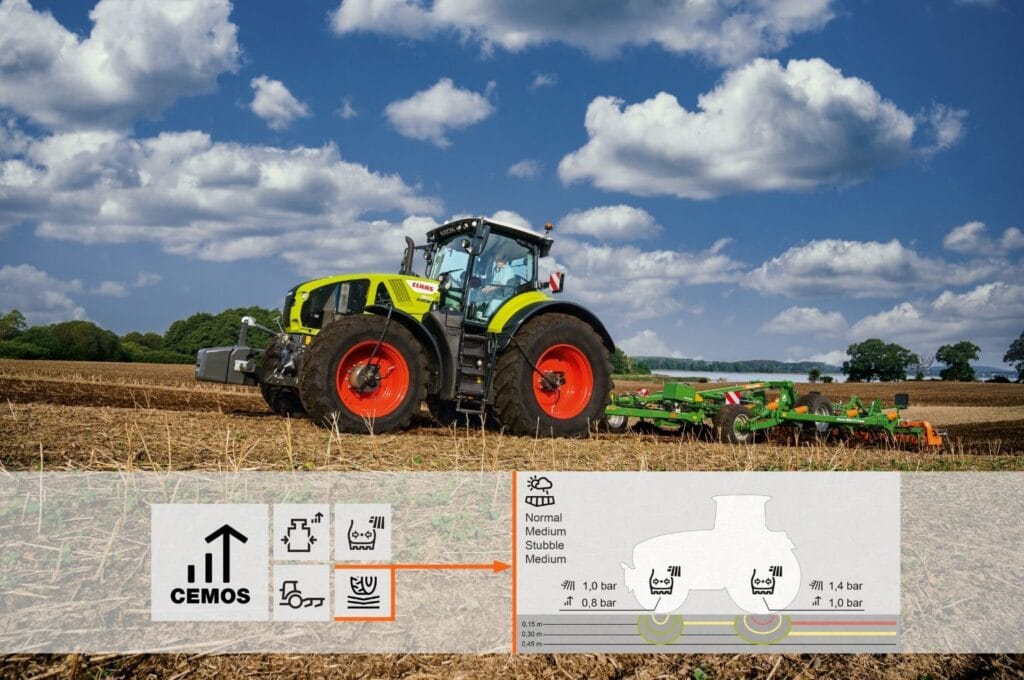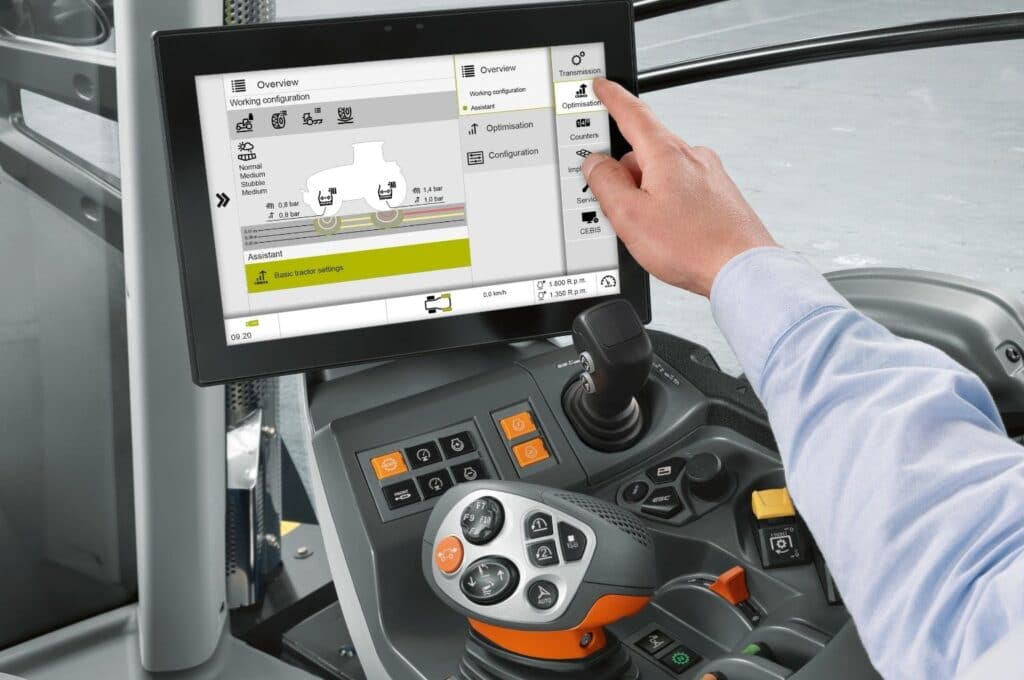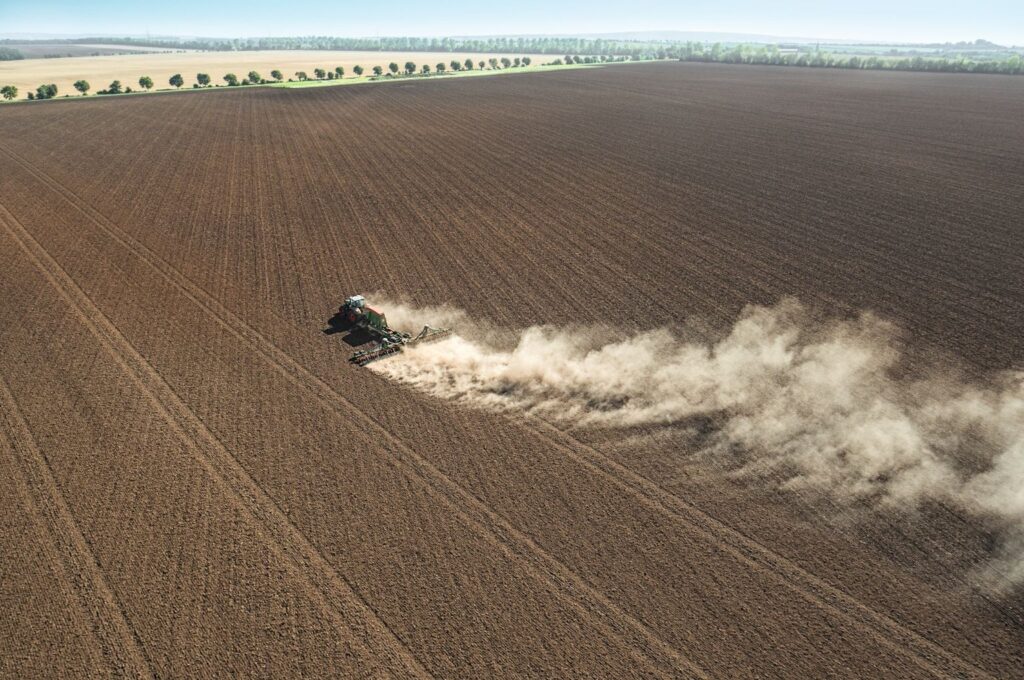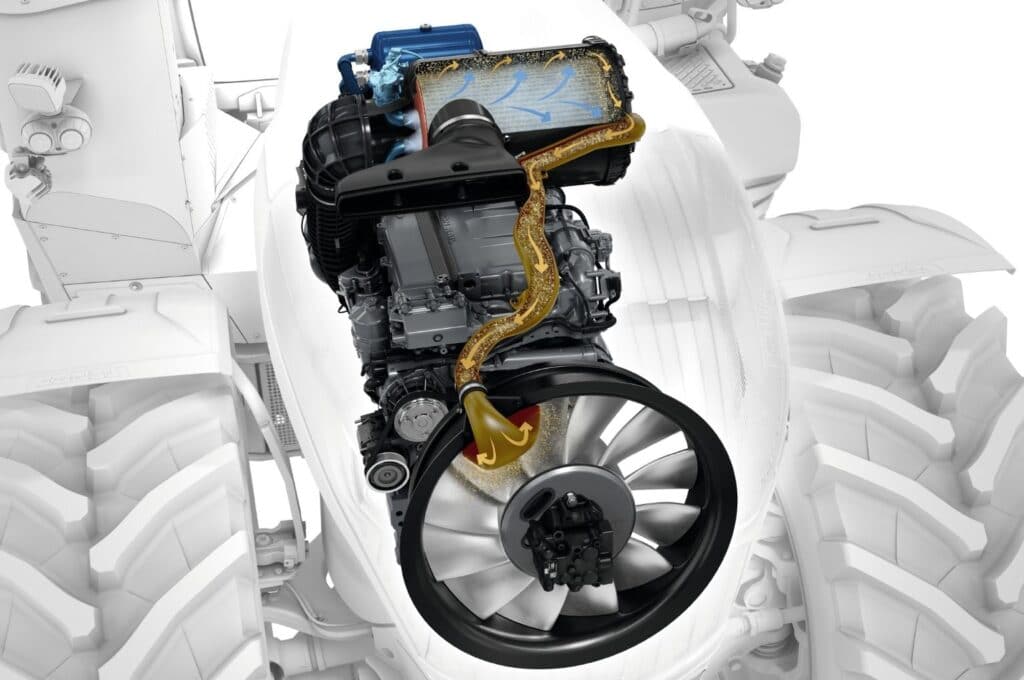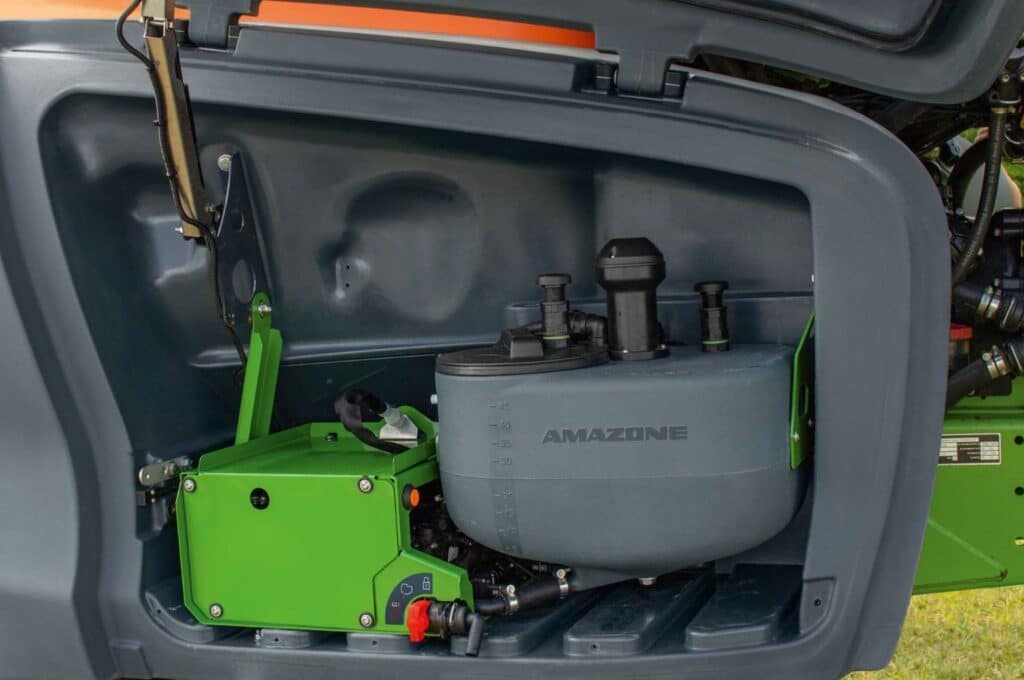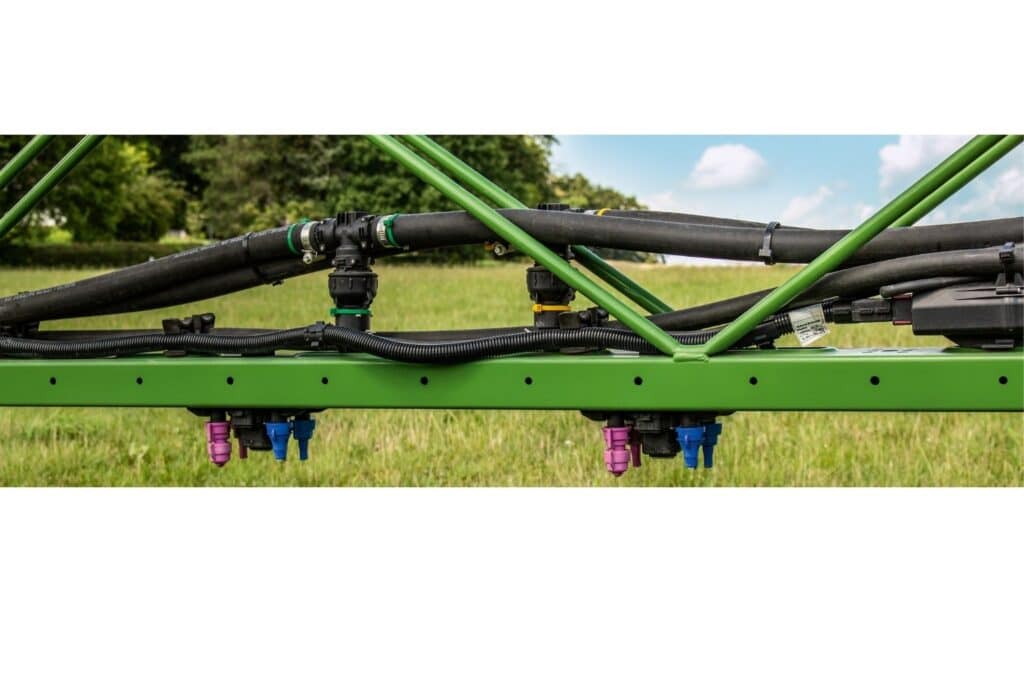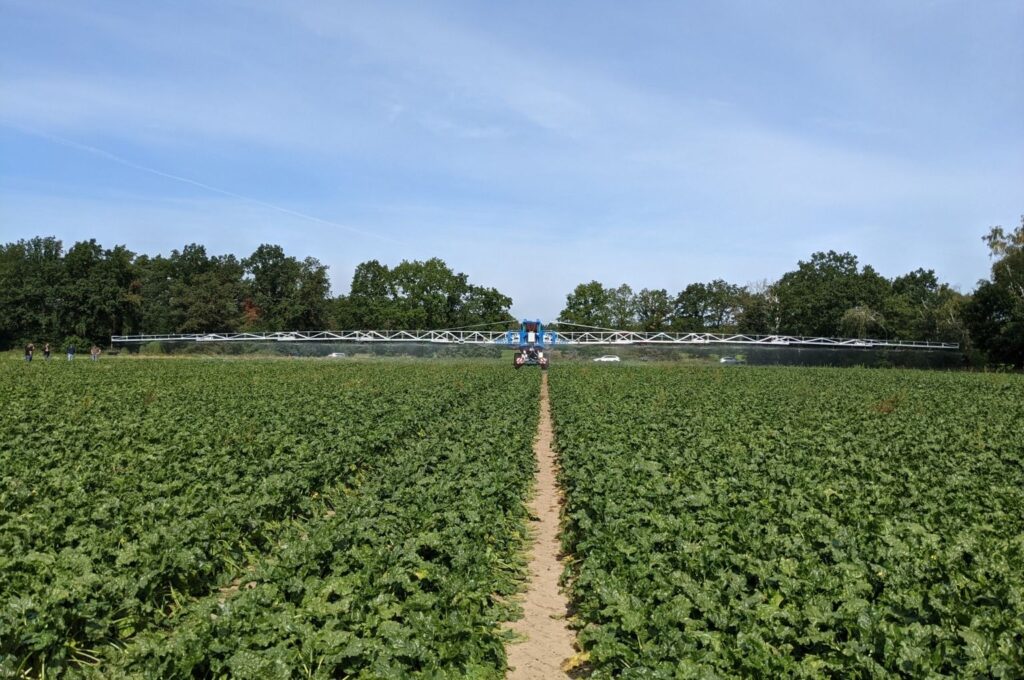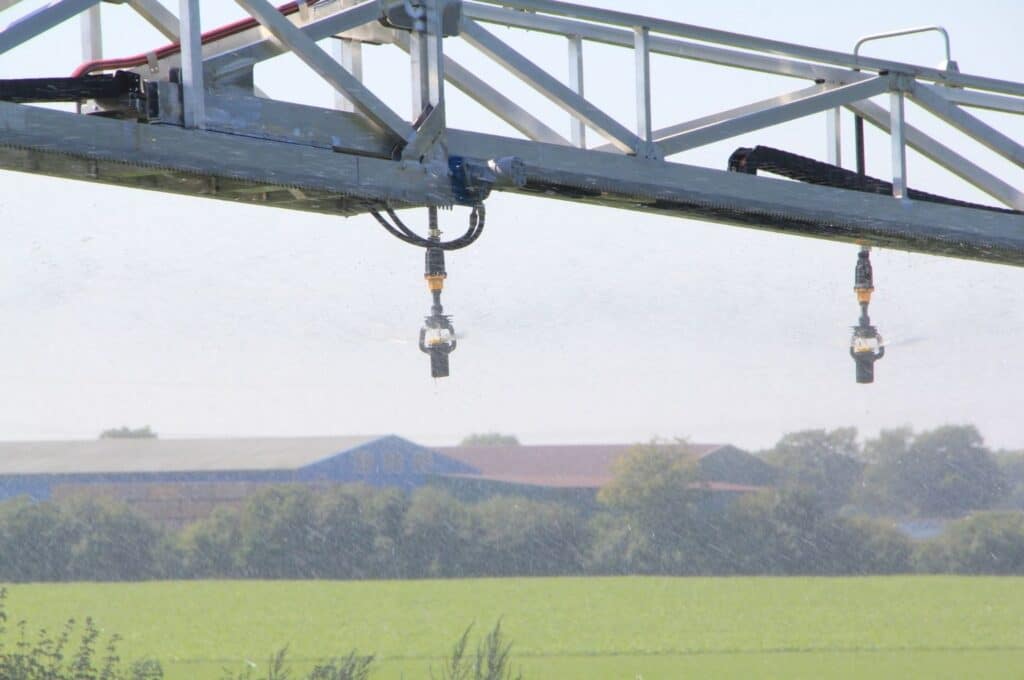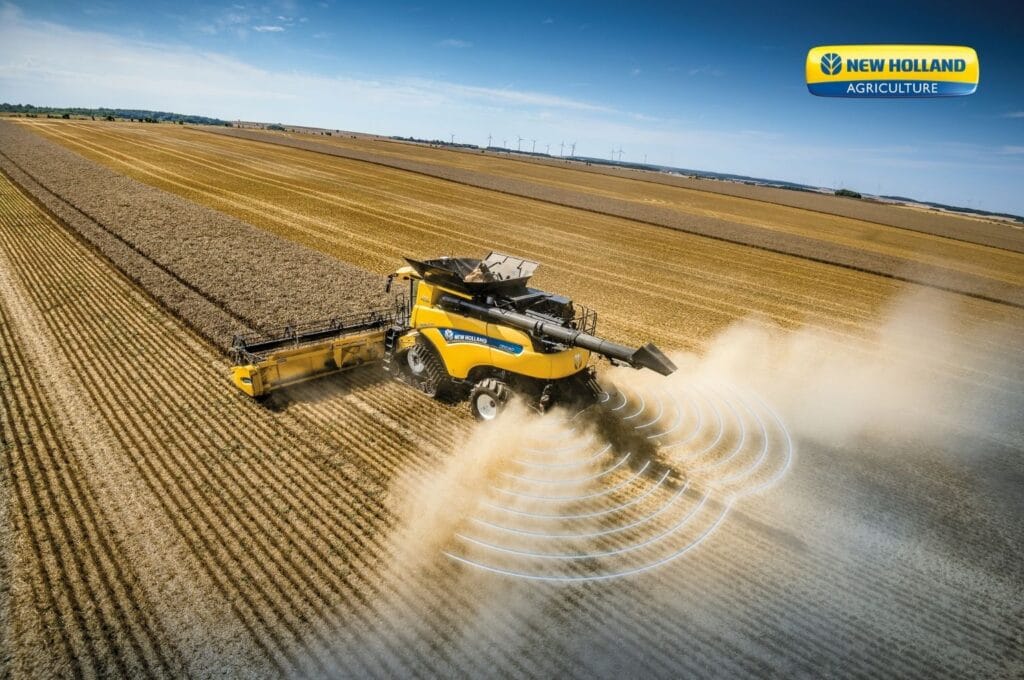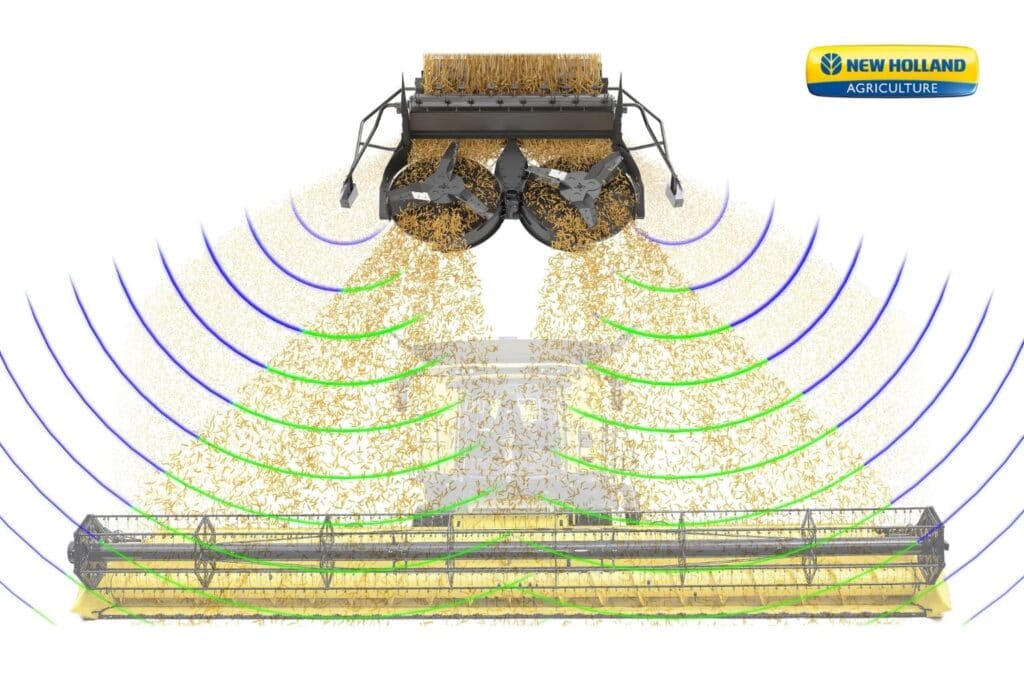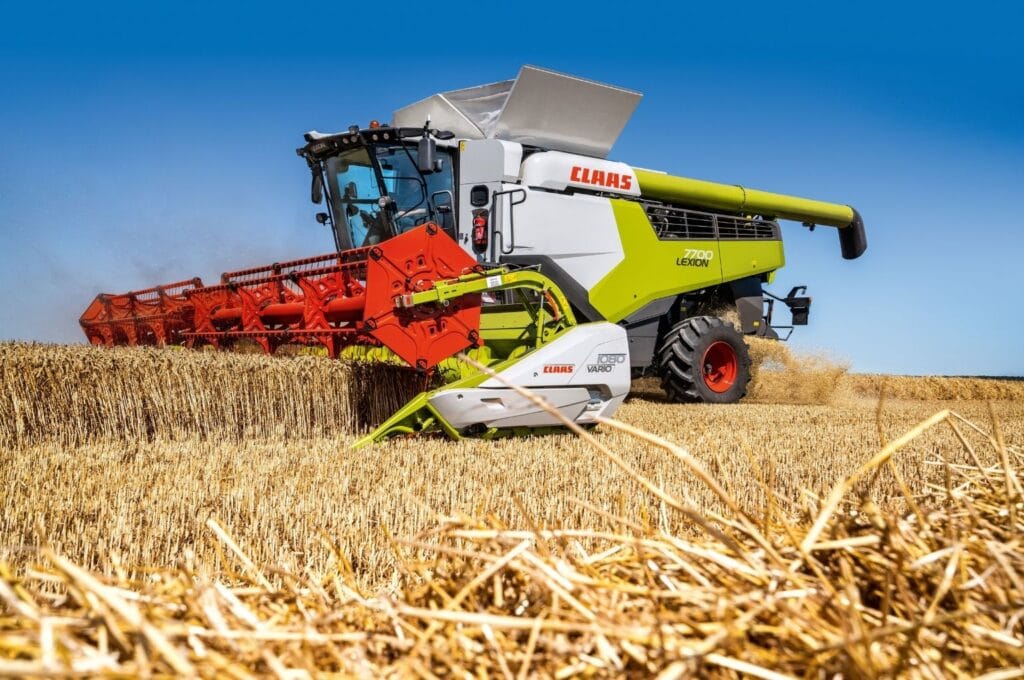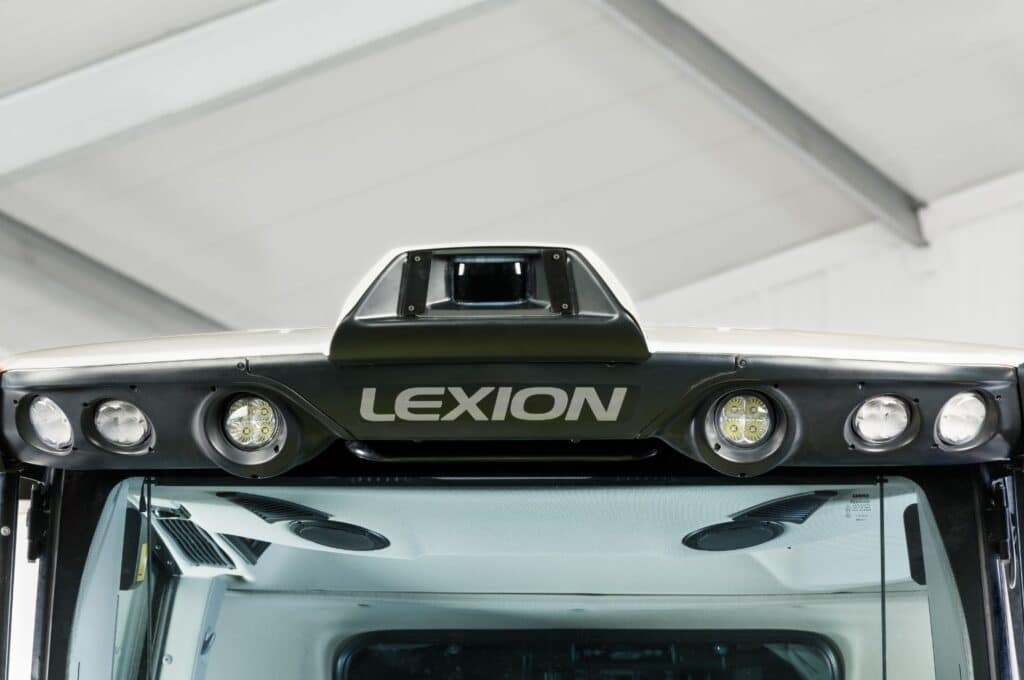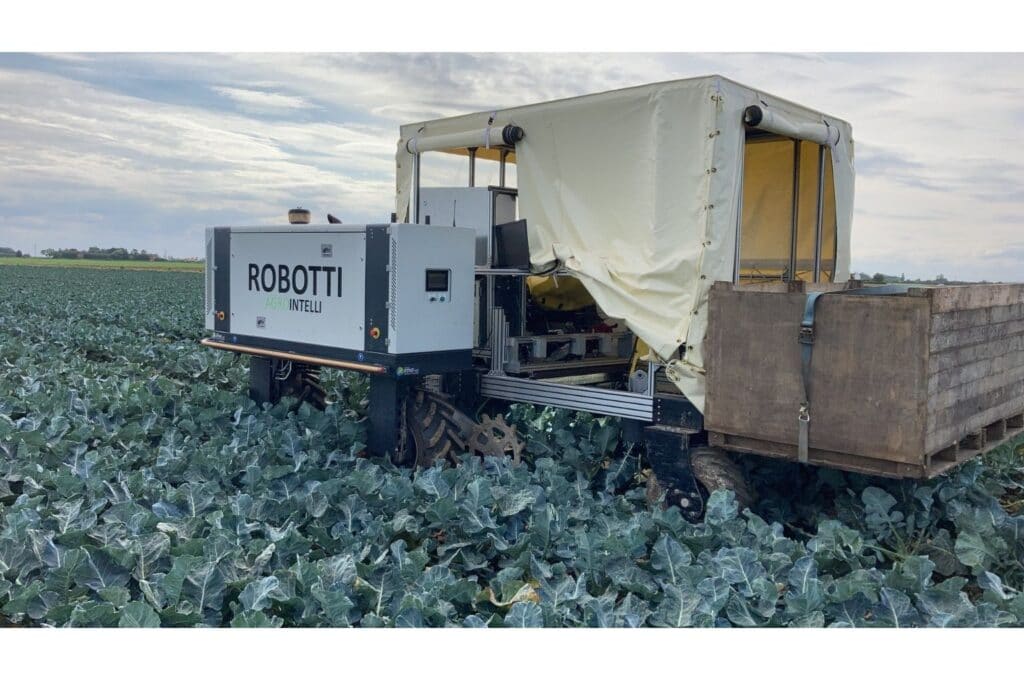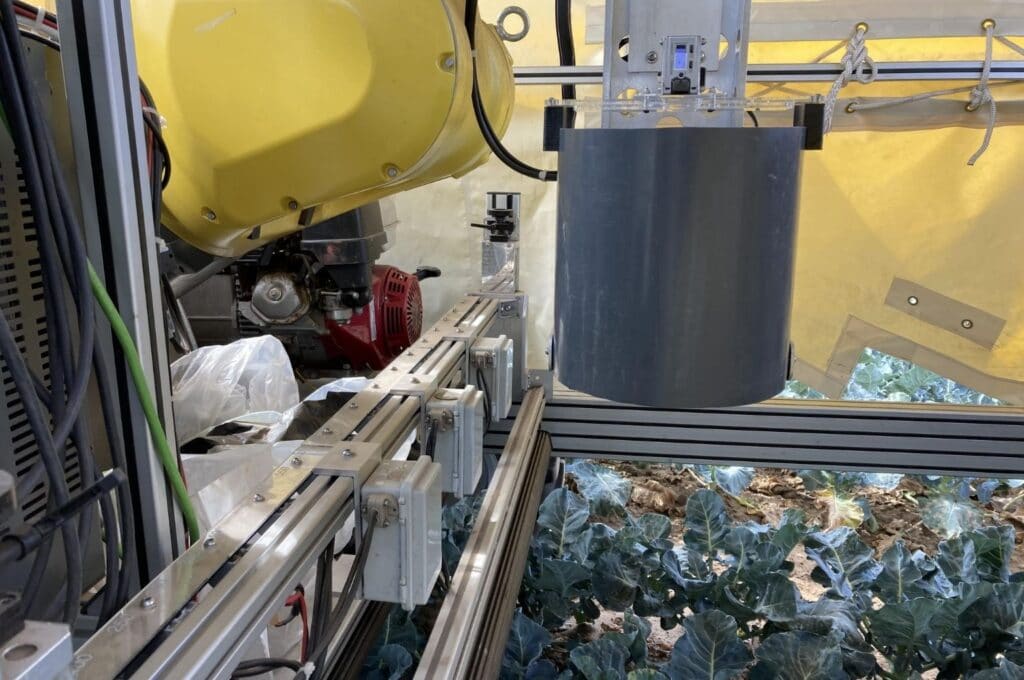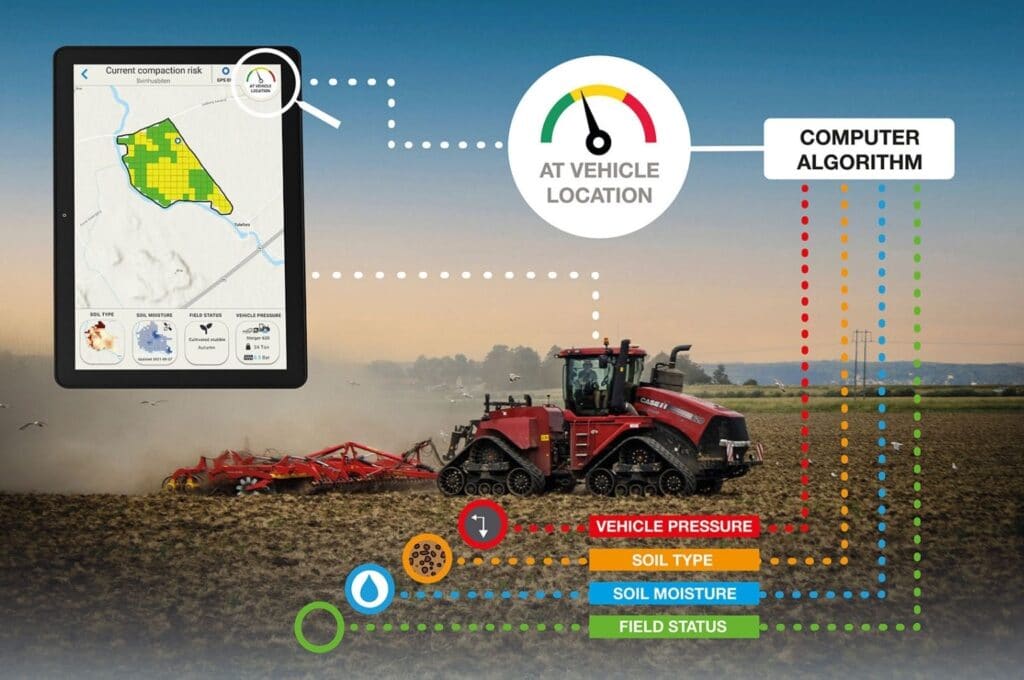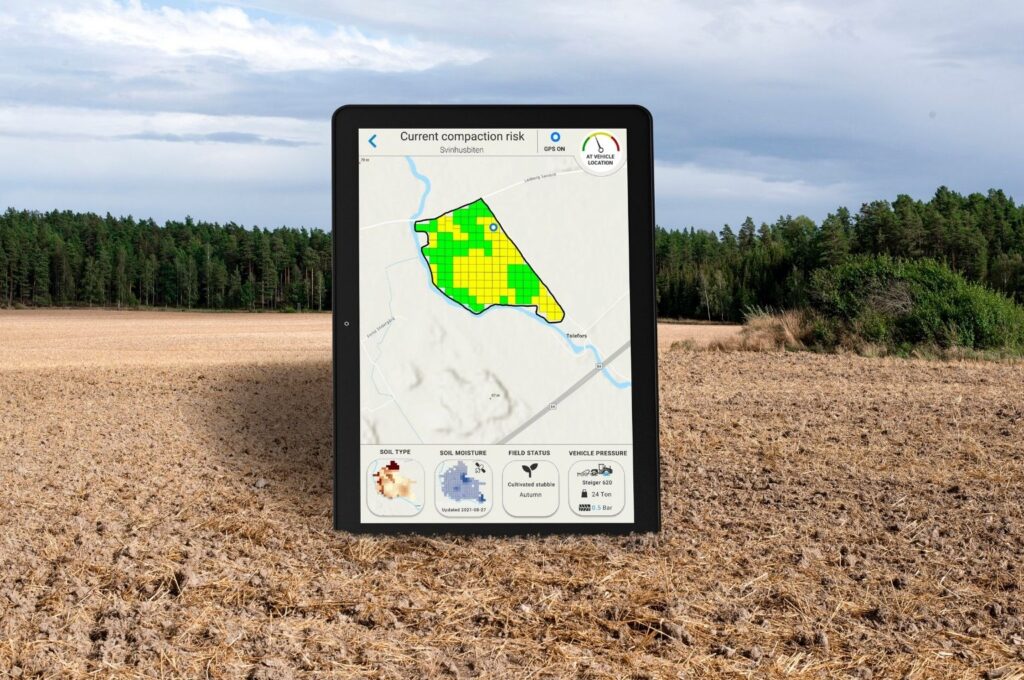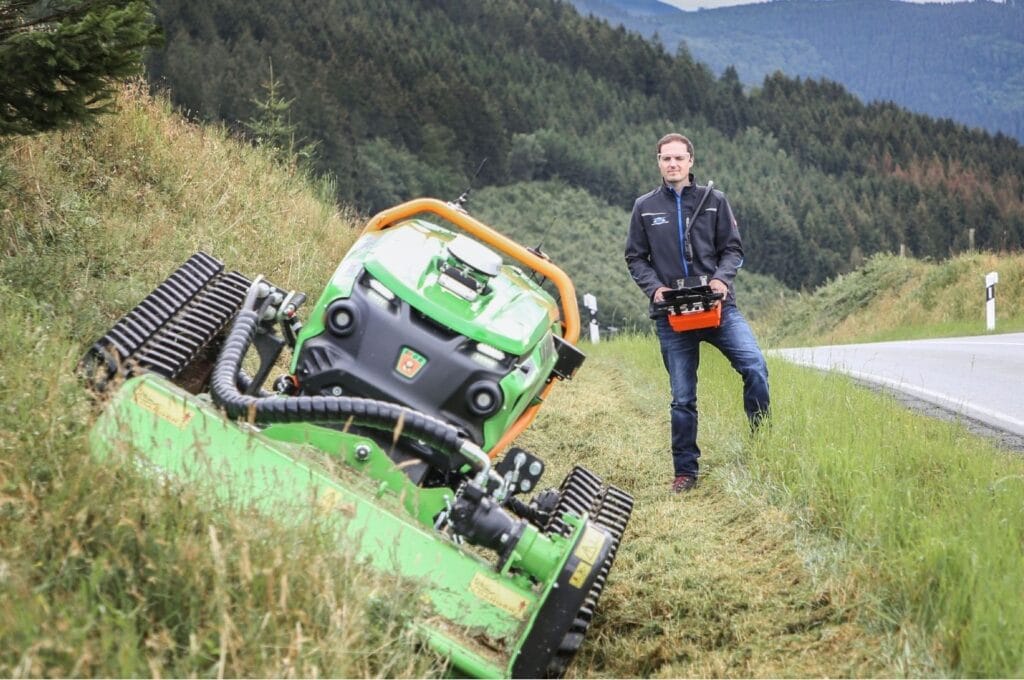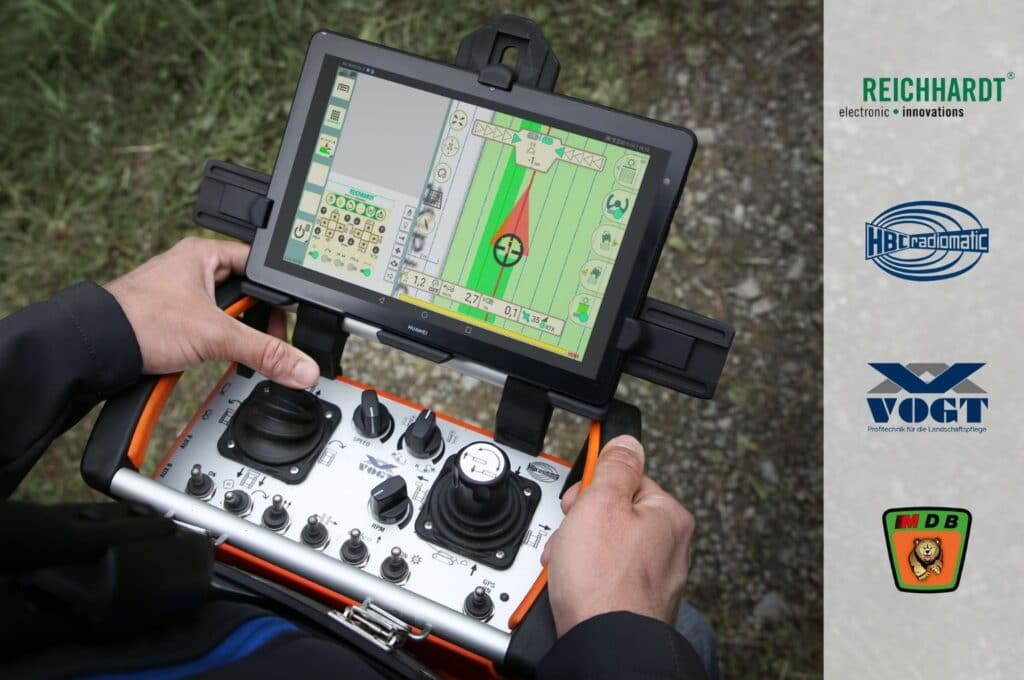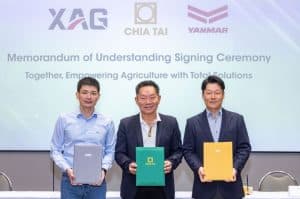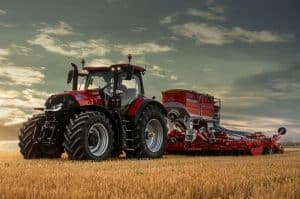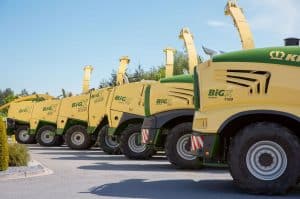The DLG (German Agricultural Society), organiser of Agritechnica, announced the winners of the Agritechnica Innovation Awards. With 164 qualifying submissions, the leading innovation award scheme for the international agricultural machinery industry has announced one gold and 16 silver award winners.
Gold award criteria
An Agritechnica Innovation Gold Award is conferred on an innovation demonstrating a new concept in which the functionality has changed decisively and gives rise to a new process or marks a substantial improvement to an existing process.
Key criteria :
- Practical significance at farm level
- Operating profitability and efficiency benefits
- Improvement on the environment and energy consumption.
- Work load reduction and improved health and safety
Silver award criteria
An Agritechnica Innovation Silver Award is conferred on an innovation for an existing product such that a significant improvement in functionality and process is achieved. The product does not fully meet the criteria for the award of an Innovation Gold Medal.
Key criteria include:
- Relevance at farm level
- Work load reduction and enhanced work quality
- Improved reliability
Gold Award
NEXAT-Systemtraktor
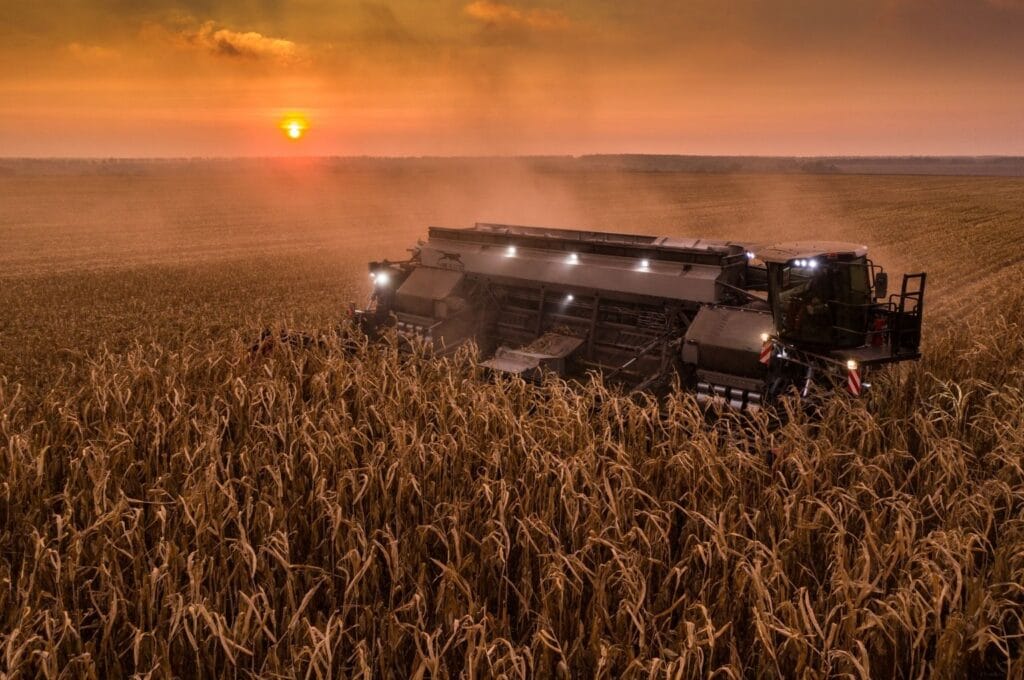
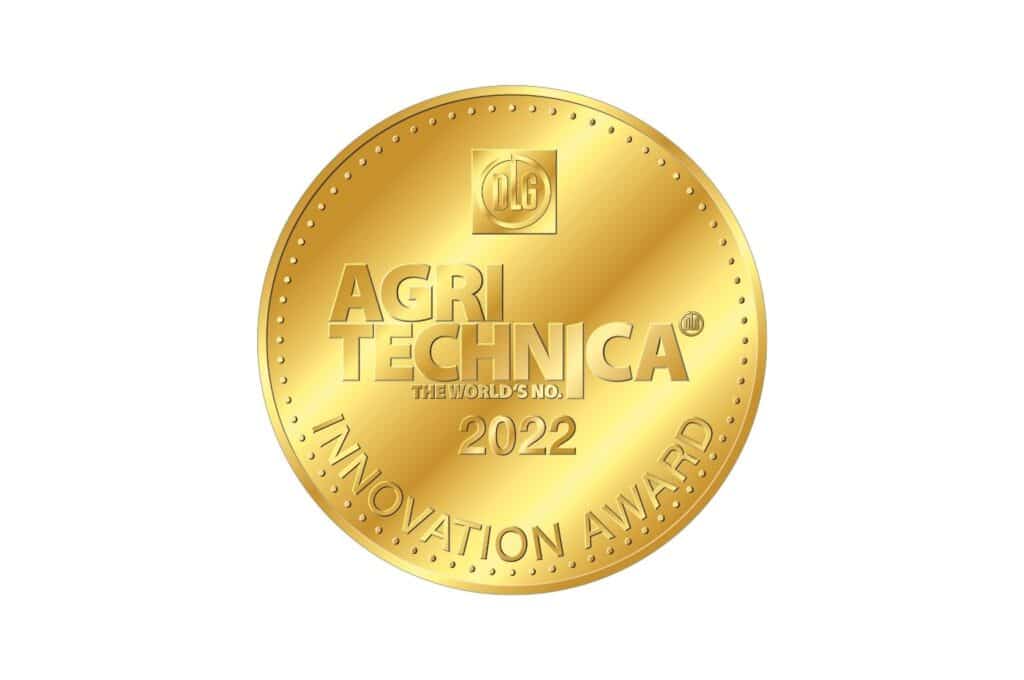
The NEXAT is a carrier vehicle that can be used for all crop production work, from tillage and sowing to crop protection and harvesting. Instead of conventional hauling, the implements for tillage and cultivation are carried. This leads to increased efficiency compared to tractor and towed implement combinations. With the 14 meter version, the system is designed such that 95% of the total field area is never driven on in the envisaged bed mode, resulting in high yield potentials with good soil and environmental protection.
The NEXAT is designed as an autonomous working machine and is equipped with a peripheral monitoring system. A cab that can be rotated by 270° is available for process monitoring. This establishes the basis for fully automated machine operation and enables manual vehicle guidance during transport. The integrated implements are mounted between the four large, electrically driven track running gear units, which can be rotated by 90° for travelling by road. At present, power is supplied by two independent diesel engines, each offering an output of 400 kW/545 hp, with generators. The vehicle is designed for alternative drive technologies such as fuel cells.
With the integrated NexCo combine harvester module, the NEXAT achieves grain throughputs of 130 to 200 t/h for the first time. The innovative threshing concept uses a 5.8-m-long axial rotor mounted transverse to the direction of travel. The flow of harvested material is introduced centrally into the rotor and at a tangent to achieve energy efficiency. The rotor divides it into two material flows. This enables roughly twice the threshing performance of conventional machines and establishes the prerequisite for uniform straw and chaff distribution with two choppers, even with a cutting width of 14 meters.
Grain delivery is ensured by a 36 m³ grain bunker, as a result of which the combine harvester unit does not require a transfer vehicle on normal-length fields. Transfer to the transport vehicle can take place on the headland; with an unloading capacity of 600 l/s, the process only takes around one minute. The NEXAT-NexCo combination therefore gives rise to a completely new dimension of threshing performance when the carrier vehicle is used throughout the year. The concept heralds a paradigm shift in agriculture and is to be viewed positively in terms of resource economy and ecology.
Silver Awards
Krone GX ExactUnload
intelligent automatic unloading system for unloading according to distance
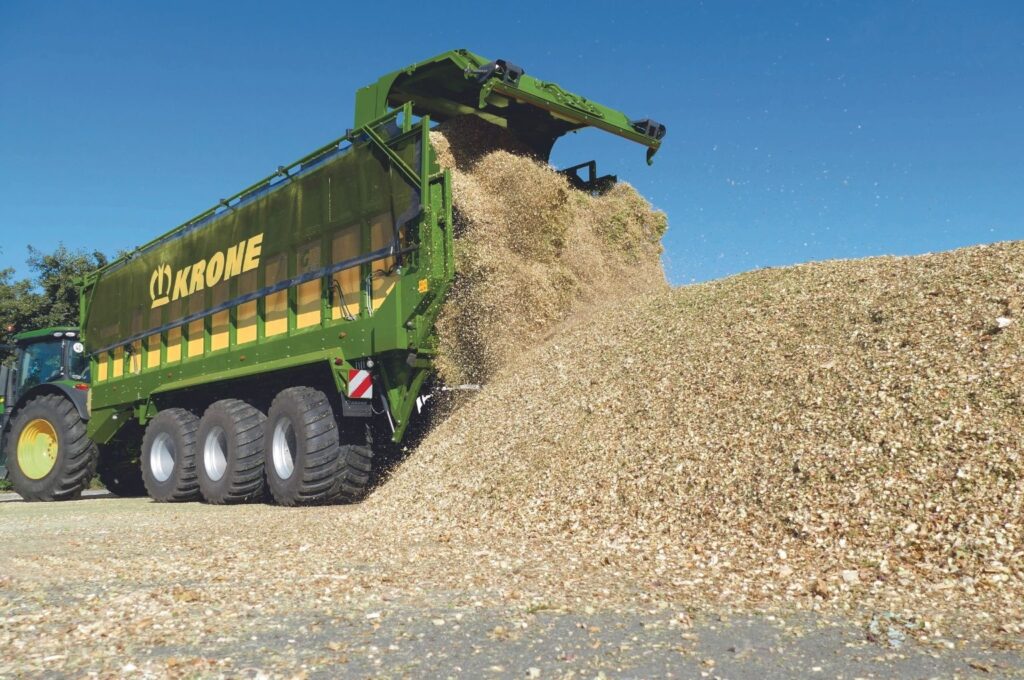
Transport work during long days spent harvesting is strenuous and demands constant attention, no matter whether loading on the field, driving on the road or unloading at the farm are involved. The driver is under particular strain when unloading the harvested material over the widest possible area in the silo is required. This is important to enable the wagon load to be quickly distributed and optimally compacted and therefore to achieve the best possible silaging result.
With Krone ExactUnload, unloading the new GX roller belt wagon with the front wall running to the rear is controlled so that the transported material can be distributed evenly over a previously defined distance. In this process, the speed at which the tractor and trailer are moving within the speed window (up to 3.5 kph) is irrelevant. This ensures that even inexperienced drivers can always achieve good distribution and the compaction vehicles have less material to redistribute, thus contributing to more uniform compaction and therefore to a high silage quality. In addition, fuel and time savings are achieved, the material is loosened less due to the wheel slip of distribution vehicle and additional capacity is obtained for quality-relevant compaction.
Krone ExactUnload is a crucial further development that not only offers the machine operator maximum comfort and relief, but also can reduce driver errors and therefore accidents by relieving the driver, particularly during long harvesting days and on silo clamps.
Agro ContiSeal
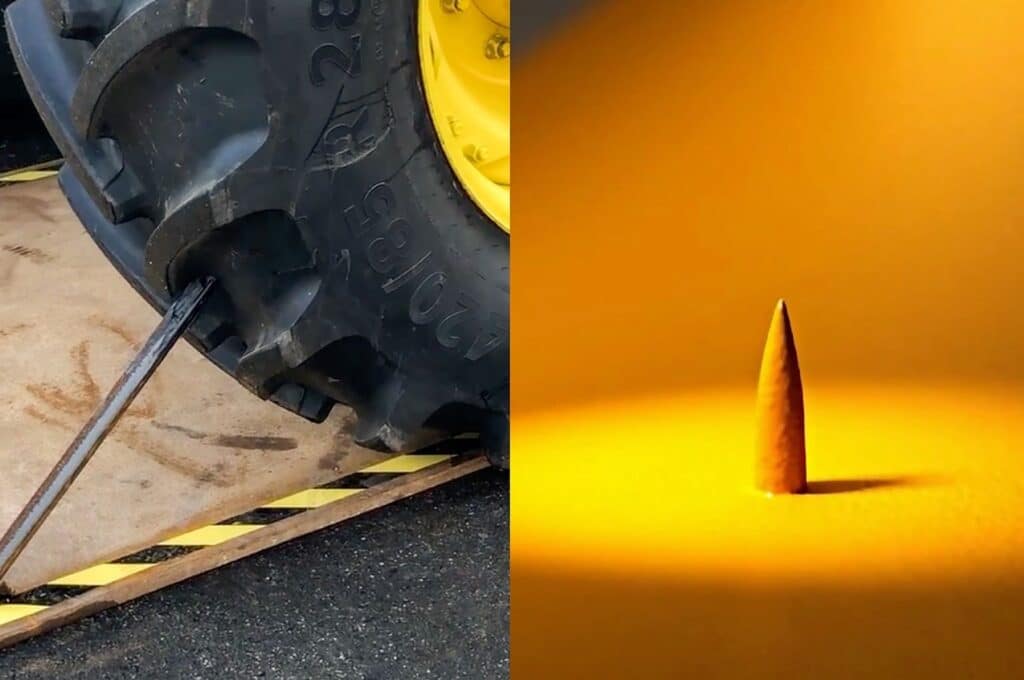
Flat tyres always occur at the wrong time and in the wrong place, something that is also true in the case of agricultural machinery. However, the adverse effects of a flat tyre in agriculture are considerably worse than in other industries, and damage caused by foreign objects driven into the tyre occurs far more frequently. Due to the size and the weight of the machines and tyres and as a result of the ensuing time and performance losses during the short sowing and harvesting seasons, however, changing a tyre on the field leads to significant delays in production. These surpass the costs of changing the tyre, to say nothing of the possible risks stemming from changes in handling behaviour if a tyre bursts.
A viscous polymer on the inner side of agricultural tyres seals the leak in the event that the tread is penetrated by foreign bodies such as nails or other pointed objects. Despite the damage, the vehicle can continue to be driven and the tyre can be repaired or exchanged later on. This can prove particularly important during the very tight time slots in which agricultural work often has to be completed. Changing tyres under difficult conditions off or on the road can therefore be extensively avoided and can be done later on in the workshop. The availability of vehicles is increased, something that is highly important, especially in the case of specialised harvesting machines.
The innovative Agro ContiSeal system from Continental marks a crucial further development in the area of agricultural tyres and makes a major contribution to ensuring the machines’ operating reliability when it really counts.
Terranimo soil compaction risk display on the terminal
The use of effective agricultural machinery leads to an increased risk of soil compaction. In this process, deep soil compaction that cannot be undone using the usual tillage methods is increasing due to the significant growth in the sizes and weights of machinery over the past few decades.
The new system from Claas shows the driver how high the risk of compaction is under the current operating conditions directly on the terminal in the cab. In order to calculate this, Claas links information supplied by the CEMOS driver assistance system on aspects such as the soil type/condition, axle loads or tyre pressures with Terranimo, a tool used to simulate soil loading and load bearing capacity that is recognised throughout Europe. Dynamic axle load shifts are also taken into consideration in this process. Red-coloured pressure bulbs, for instance, indicate a high risk of compaction. In this case, the driver can abort the planned operation or implement suitable countermeasures (e.g. changing ballast weights or tyre pressures) and immediately check the effects of these again.
Thanks to this preventative driver support, the Claas Terranimo soil compaction risk display on the terminal enables the avoidance of harmful compaction and the related, negative effects on soil health and profitability.
Automatic dust extraction system
Agricultural machinery and tractors are exposed to particularly dusty environments, which is why robust and high-performance filter systems that combine high separation rates and long service lives are required to clean the engine’s combustion air. Particularly high dust loads are incurred when working during dry phases, i.e. especially during the harvesting season. In this case, intermediate cleaning of the air filter ensures that downturns in performance or increased fuel consumption do not occur because insufficient air is being drawn into the engine.
With its automatic dust extraction system, Fendt has presented a unique solution that recognises the air filter’s soiling level during operation or while driving and cleans it fully automatically without it having to be removed. With two short but powerful pressure pulses on the inner side of the air filter, through-flow to the outside is achieved. The dust that has deposited on the filter surface is loosened and sucked out of the housing at the same time by means of a vacuum. The vacuum is produced upstream of the hydrostatically driven cooling air fan, whose rotational speed is temporarily increased. The pressure pulse comes from a separate compressed air reservoir that is filled with air at a pressure of 12 bar by the compressor. The automatic cleaning intervals are triggered as soon as the vacuum in the intake system falls below a limit value due to the increased soiling. The system functions under all operating conditions including full load.
The automatic dust extraction system renders time-consuming, error-prone and often neglected manual cleaning of the air filter superfluous. Tractor downtimes and the risk of increased fuel consumption due to soiled air filters can therefore be minimised.
Müthing CoverSeeder
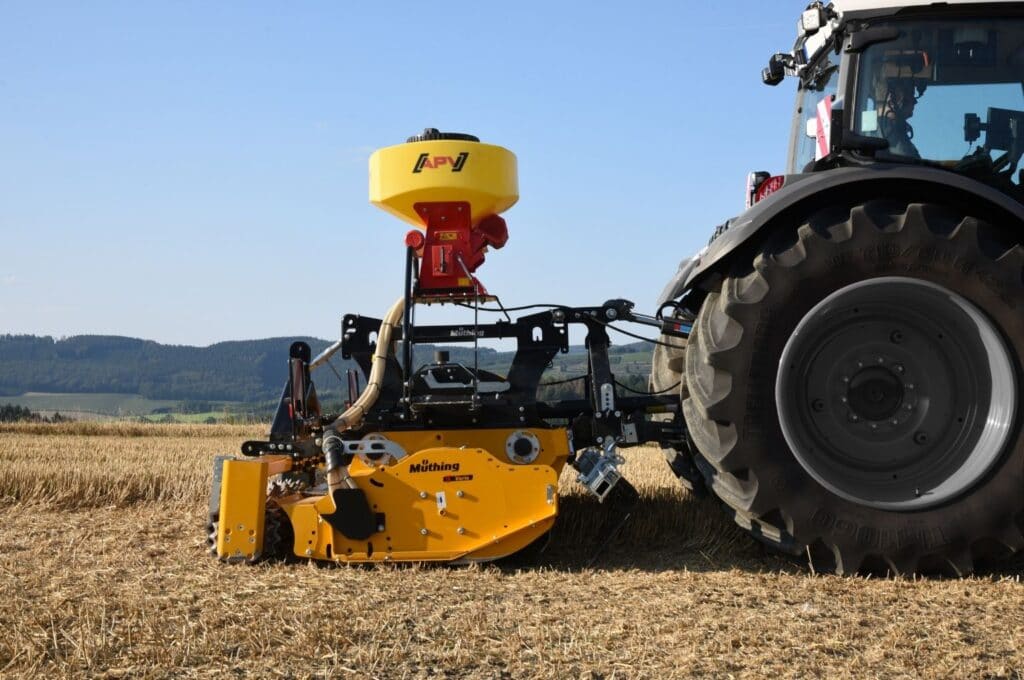
So far, sowing intercrops after harvesting has been either relatively inaccurate and coverage has often been missing in the case or broadcast sowing. Or it has proved relatively laborious in the case of row seeding or direct drilling, because tillage is possibly needed beforehand or an additional operation is required for good straw management and harvesting residue processing prior to direct drilling.For the first time in a further development, the Müthing CoverSeeder combines familiar components to form a new intercrop sowing system that incorporates all steps in a single operation: for consistent and homogeneous growth, processed harvesting residues are combined with special grain placement. Specifically, a front-mounted harrow ensures fine soil and improves straw distribution. A trailing flail mulcher shreds the straw and the stubble and removes harvesting residues close to the ground from the seed bed thanks to the high suction power of the flail rotor. The total resulting mixture is conveyed over the subsequent seed rail, which places the grains on the exposed bed. The seeds that are placed on the cleared surface of the soil are then covered by the processed organic material. Once the seeds have been sown and covered, a following prism roller ensures the soil contact required to achieve good germination. The roller also guides the height of the CoverSeeder. Forgoing intensive tillage in combination with a full covering layer of biomass protects the soil from evaporation and erosion, and provides the water required for germination even in extremely dry conditions.
The Müthing CoverSeeder is an innovative and flexible implement that combines sowing and harvesting residue management; the innovative implement therefore represents a new element in forward-looking and resource-efficient agriculture. Compared to conventional and possibly also multi-phase methods, energy consumption and the necessary labour time are reduced and costs are lowered while the intercrop is well established at the same time. Field hygiene is also optimally taken into consideration thanks to the subsequent shredding of all surface material. Since tillage is forgone, with the exception of the harrow tines, the natural soil structure is preserved, thus enabling earlier navigability even after rainfall. At the same time, soil life is safeguarded and CO2 release, evaporation and erosion are reduced.
TerraService
Company: RAUCH / Joint development with AgriCircle, Germany
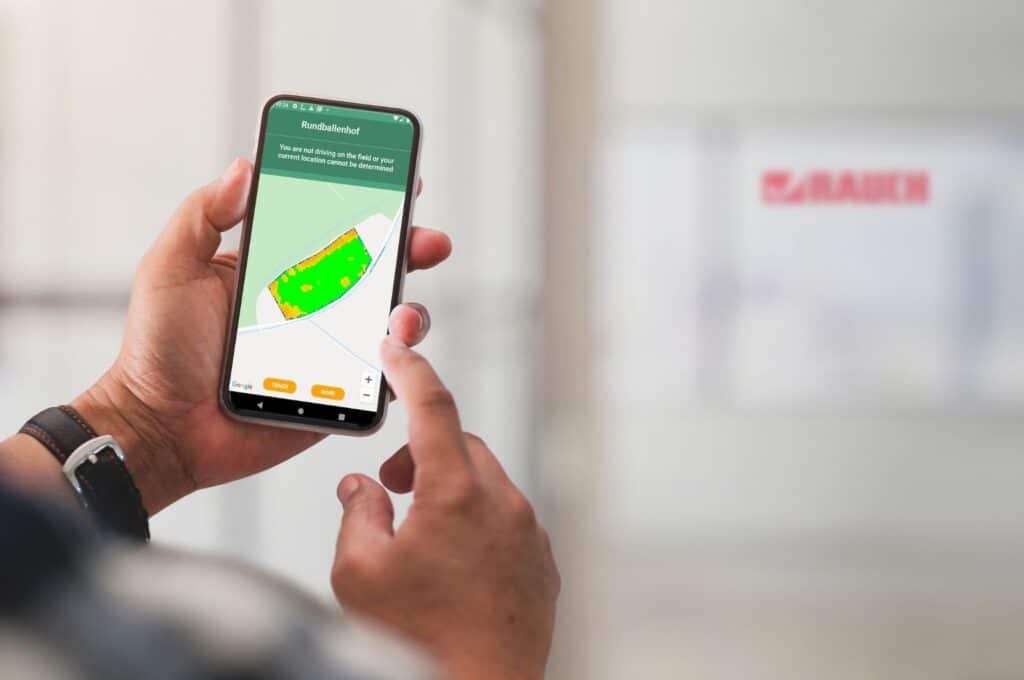
Each time they drive over a field, agricultural machines apply pressure onto the soil because the weight force produced by the weight of the machine is conducted into the soil via the tyres’ contact areas. As farming has grown increasingly efficient, agricultural machines have become considerably more powerful over the past few decades, but usually also heavier. This also leads to an increase in the soil compaction caused by the weight of the machines. The soil compaction effects have a particularly negative effect in weather conditions that lead to borderline navigability.
The Rauch TerraService, a joint development with AgriCircle AG, offers farmers a digital service with which they can calculate the navigability of arable land in advance. The user has to input the machine data required to do this or must call up data that has already been stored. The local soil moisture is estimated by means of radar measurements performed by the Sentinel-1 satellites in combination with weather data. Supplemented with information regarding the soil structure, this machine and soil moisture data is used to comfortably calculate the navigability of the agricultural land in advance on a portable terminal and is displayed for the specific partial areas in a 10 meter grid. If necessary, the user is provided with a warning or a message if the ground is not navigable or is only navigable to a certain extent. The sequence in which the fields are driven on, the entry position into large fields and the processing sequence of the ruts can also be optimised or defined in order to prevent becoming bogged down. The good functional capability of the soil is maintained in this way. If driving on a field is not possible, laborious and time-consuming work preparations and travel to the arable land are omitted.
With the TerraService, Rauch and AgriCircle have significantly evolved existing simulation models for ascertaining navigability and calculating the risk of harmful compaction by using satellite-supported radar measurements for determining the soil moisture. The service is flexible and can be used for various agricultural work processes such as fertilisation, spreading liquid manure and crop protection, and helps farmers to maintain a good soil condition, a good soil structure and therefore a high yield level.
DirectInject system
fast, flexible and needs-based dosing of crop protection agents
As typical retrofitting solutions, direct injection systems have barely achieved a foothold on the agricultural market to date due to various disadvantages: one reason is often the tank mounted at the front on the platform. It feeds in the concentrated crop protection agents, which are pumped over long distances, at a central point in the sprayer’s fluid circuit. This results in long lines for the new mixture before it arrives at the nozzle. The ISOBUS-controlled application on partial areas that is common in practice is therefore virtually impossible. The difficulties are compounded by the high variability of the different crop protection agent formulations, up to and including granulated crop protection agent.
The flexible selection of crop protection agents on the field and the use of active substances on partial areas according to crop production needs are making increasing demands on farmers and technology in modern crop protection. DirectInject resolves the conflict resulting from increased flexibility and the economically advantageous increase in the size of crop sprayers in crop protection. Flexibly dosing both liquid and granulated agents enables an appropriate reaction to the respective situations on the field with the existing system. An additional benefit is that additional passages are no longer required, thus saving farm inputs such as diesel and labour time. Unused crop protection agents can be returned to the original container, meaning that the quantity of crop protection agent required does not have to be known prior to application and the fate of pre-mixed residual quantities is no longer a concern. Complete integration into the spray agent circuit and operation of the sprayer via the ISOBUS system equate to both simple operation and automatic cleaning via the crop sprayer’s Comfort-Pack plus. This can be carried out conveniently and quickly from the tractor cab on the field. If application maps are available, the necessary reaction time is eliminated and spot spraying can be easily carried out with high precision on the field.
DirectInject therefore lays the foundation for even more precise crop protection with minimum use of resources, thus protecting the environment and lowering costs.
Company: Planungsbüro Heinrich, Germany
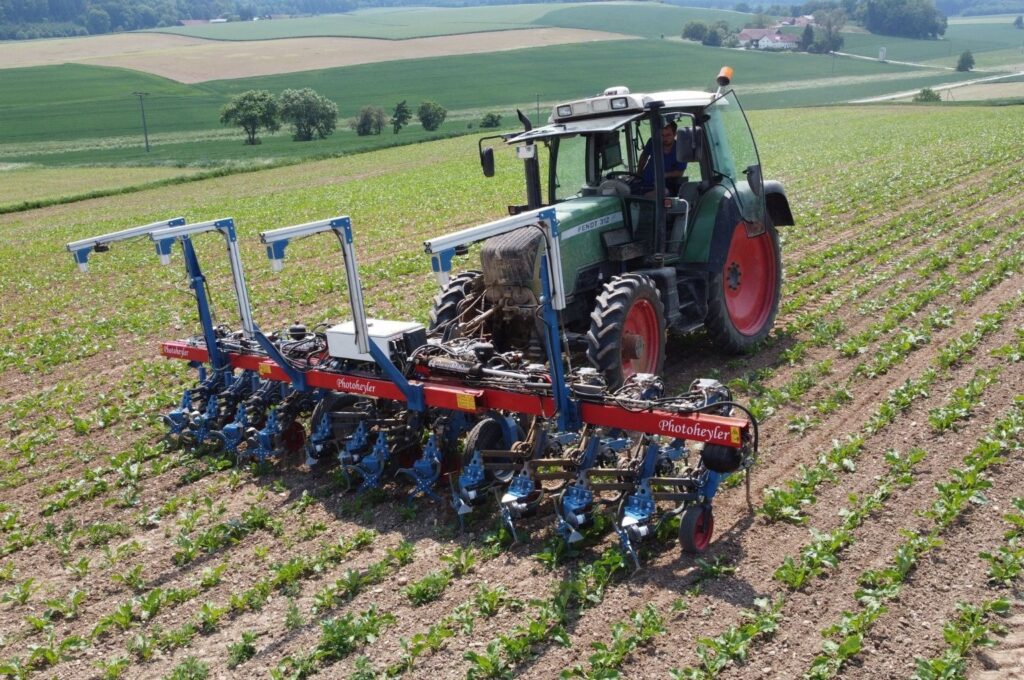
Particularly in organic farming, mechanical weed control in the rows is an essential measure for ensuring that crop growth outstrips that of competing weeds and therefore for safeguarding a healthy crop and good yields. The current technology that is available performs very poorly in this regard.
The Photoheyler’s innovative rotor concept enables area performances of over 1 hectare per hour to be achieved. The Photoheyler row guidance function reliably detects crop rows with the aid of cameras. The machine’s sensor wheels can be steered using hydraulic cylinders and are synchronised with those of the tractor, meaning that they mirror their movements. The hoeing machine is therefore guided extremely precisely along the rows and the previous difficulties involved in controlling the machine and the tractor at the same time are resolved with the Photoheyler. In other solutions using a moving frame, the driver has to deal both with guiding the tractor and with operating the camera control system at the rear. This leads to an increased number of mistakes being made, particularly when driving into the next rut, during hoeing on the headland, on wedge-shaped land or in tight bends. Since the hoeing machine is firmly mounted on the tractor, the driver retains control at all times and laborious manual adjustment of the hoeing implement using a joystick is therefore forgone. By oversteering the tractor wheels on a lateral slope, the Photoheyler keeps the vehicle combination on course even on a gradient. The crops are not buried since the rotor is positioned obliquely and the vehicle speed is therefore compensated for. As a result of this, the rotor always cuts at an angle of precisely 90° to the crop, whereby the weeds are cut out from the crop row and placed between two rows. There, they are again unrooted or buried by the trailing tools. For effective weed regulation, hoeing several times is necessary until complete crop coverage is achieved. Various tool systems can be used to hoe close to the sugar beet row from the two-leaf stage to full crop coverage.
The sowing/planting technology requirements include a precision seed drill or a planting implement with exact placement in a delta configuration over the entire width of the machine. A Kverneland Unicorn with Geoseed Level 1 or a comparable system is recommended for sugar beet. In addition, the overall concept will enable application in the form of spot spraying in the future. In this process, application is carried out extremely precisely and the amount of crop protection agent used is reduced at the same time.
DL 66 Pro
Company: Fasterholt Maskinfabrik, Denmark
The DL 66 Pro irrigation machine from Fasterholt is an innovative combination of a mobile irrigation machine with machine advance and a mounted nozzle carriage consisting of an innovative telescopic and hydraulically foldable 66 meters aluminium boom. The advantages of the two currently widespread methods (self-propelled vehicle and nozzle carriage) are combined here in a single machine.
The general advantages of nozzle carriages compared to large sprinklers (canons), which have so far always been operated from a mobile irrigation machine with sprinkler infeed, are that firstly, they offer resource-efficient irrigation at a low pressure (approximately 1-2 bar depending on the nozzle that is used) and close to the ground, and secondly, they enable precise demarcation of the working area. This low pressure compared to the canon saves energy. At the same time, the droplet range exhibits a low percentage of fine droplets, which minimises evaporation. Since the lateral distribution does not have to be implemented by means of the throw, the working height can be kept low and the wind sensitivity is considerably lower than that of a canon. The disadvantages are the significantly higher tensile force as the length of the pipe increases, which has to be counteracted by using increased wall thicknesses and which limits the field length that can be irrigated to a maximum of around 500-600 meters. Nor is moving through beds possible, meaning that these machines have to be repositioned comparatively frequently. This equates to a significant amount of work with the previous folding booms, and cannot usually be undertaken by one person alone. The advantages of the mobile irrigation machine with machine advance (self-propelled vehicle) are its higher possible pipe length (up to approximately 1,000 meters), as the machine picks up the flexible pipe from the ground and winds it up instead of dragging its entire length over the ground. If the pipe has been designed accordingly, an entire field can additionally be run along in beds, with the result that repositioning is no longer necessary. The disadvantage of this systems is its comparatively high weight, particularly when almost the entire pipe has been wound up towards the end of the irrigation process. The DL 66 Pro boom is subdivided into a total of 10 roughly six-metre-long segments, each of which has its own water supply. A type of ‘section control’ for irrigation is planned in the future in the form of the forthcoming partial width control system; this will also enable a wedge-shaped partial field to be irrigated while extensively avoiding overlapping and the irrigation of non-target areas.
The economic advantage to farmers is already perfectly clear. The possibility of irrigating up to 8 hectares with one single machine set-up without the need for any time-consuming repositioning will lead to increases in work performance and quality. Repositioning itself can also be carried out by a single person thanks to hydraulic actuation of the telescoping or folding mechanism, which saves time and additionally increases work safety. Positive impacts on the environment and the energy situation are also to be anticipated thanks to energy- and water-saving operation.
OptiSpread Automation System
Company: CNH Industrial / New Holland
New Holland has therefore developed the first chopped material distribution system with direct measurement technology, the OptiSpread Automation System. 2D radar sensors mounted on both sides of the combine harvester measure the speed and the throw of the chopped material. The sensors register the entire throw and therefore the distribution pattern. If the distribution pattern no longer corresponds to the nominal distribution pattern over the entire working width, the rotational speed of the hydraulically driven feed rotors on both sides is accordingly increased or reduced separately until the distribution pattern once again corresponds to the nominal pattern. The technology registers irregular chopped material distribution even with a tailwind or headwind, and additionally enables a distribution map to be produced.
OptiSpread is a key element in precise crop production and, as an automation step, relieves the combine harvester’s operator.
Cemos Auto Header
Auger cutter bars on combine harvesters with variable cutter bar table length are often used incorrectly. On the one hand, the reel position is not adapted to the crop conditions and on the other hand, the flow of harvested material is irregular because the length of the cutter bar table is not coordinated to the length of the plants. Often, setting the appropriate cutter bar table length after transporting the cutter bar is actually forgotten. The consequence is excessively high pick-up losses and threshing performance losses due to an irregular flow of harvested material. In addition, adjustment controllers are unable to specifically optimise the machine settings if the cutter bar is already maladjusted.
Claas has therefore developed the first adjustment control technology, the CEMOS AUTO HEADER, for auger cutter bars. A laser scanner continuously registers the height of the crop. Once the operator has specified the nominal immersion depth of the reel into the crop and the nominal horizontal position, they are adapted automatically as the crop height changes. The system recognises tramlines and the end of a crop, and conducts any bundles of cereals that fall from the cutter bar table to the intake auger. The length of the cutter bar table is adjusted for the throughput controller in the intake duct depending on the layer thickness sensor’s vibrations. The more uniform the flow of harvested material, the lower the sensor’s vibrations.
The control system relieves the operator and establishes the prerequisites for maximising throughput thanks to an automatic adjustment system. It is therefore a further element on the road to automating the combine harvesting process.
Big Baler Automation
Company: CNH Industrial / New Holland, Belgium
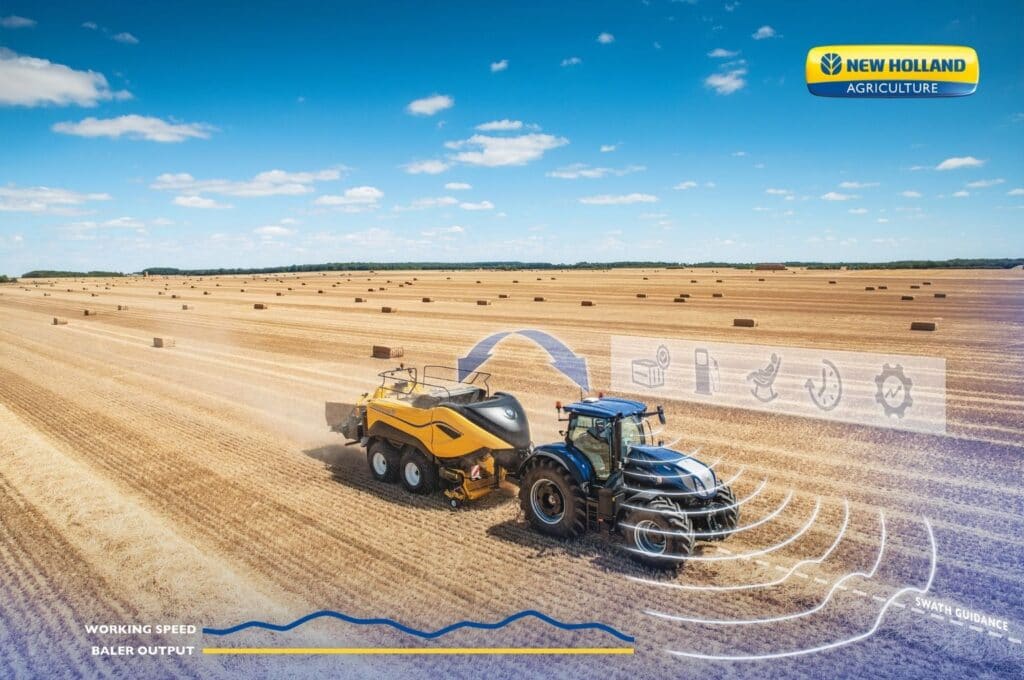
The driver is continuously challenged during baling. He has to keep his eyes constantly on the windrow ahead of him so that the entire material is picked up and the bale chamber is uniformly filled on the one hand, but so that no disturbances or even blockages occur on the other hand. In addition, the baler settings constantly have to be adapted to the changing conditions in order to achieve consistent bale densities and weights.
The Big Baler Automation system from CNH Industrial New Holland is now the first system in which an operator can set the desired bale weight directly on an agricultural square baler and the system then foresightedly and independently undertakes machine guidance and regulation of both the tractor’s speed and the baler settings. This is a crucial evolution towards fully automatic operation of a square baler. A LiDAR sensor (Light Detection and Ranging) optically measures the windrow ahead of the tractor by means of a laser, and an IMU sensor detects the tractor’s acceleration and orientation. The information from the tractor’s GPS sensor is additionally processed to achieve even greater accuracy. The tractor is therefore guided fully automatically over the windrow and its speed is adapted foresightedly to the windrow conditions. At the same time, the data that is collected is used to constantly pre-calculate the bale weight in order to adjust the baling pressure setting and, via the vehicle speed, the layer thicknesses of the individual piston strokes. As a result of this, the baler is continuously running at high capacity even in the case of changing harvesting and yield conditions, and the same pre-set bale weight is always achieved.
The Big Baler Automation system from CNH Industrial New Holland relieves the driver during long harvesting days and helps to ensure highly productive baling even on dusty days and in the dark. A consistent bale weight makes planning downstream logistics easier. Although many of the system’s individual aspects are familiar and have even won awards previously, the Big Baler Automation system stands out as a holistic solution with a high level of practical relevance.
RoboVeg Robotti – autonomous robot for selective broccoli harvesting
Company: Agro Intelligence ApS, Denmark, Joint development with RoboVeg Ltd.
One of the biggest challenges in labour-intensive vegetable farming is the general availability of workers. In broccoli cultivation, harvesting takes up around half of the total working time required.
RoboVeg Robotti has combined a high-performance Agro Intelligence ApS field robot with the broccoli harvesting robot from RoboVeg Ltd. The Robotti field robot operates with two engines that deliver a total output of 104 kW. 40 kW of this output can be tapped off at the power take-off shaft. The lifting mechanism has a lifting power of 750 kg. The RoboVeg is equipped with high-resolution 2D cameras and 3D sensors. Two robot arms that can be swivelled around six axes undertake autonomous broccoli harvesting. A robot arm requires approximately three seconds from selecting the broccoli on the field to putting it down. Its harvesting performance is around 2,400 units per hour, whereas performances of only around 300-360 units per hour and worker are achieved in manual harvesting.
While autonomous robots are already available and used for sowing, weed control and harrowing, automating harvesting has not proved possible until now. The RoboVeg Robotti is the first autonomous system for harvesting broccoli and therefore contributes to significantly improving productivity. For the growers, this represents increases in efficiency and reduced costs.
RSM Ok ID
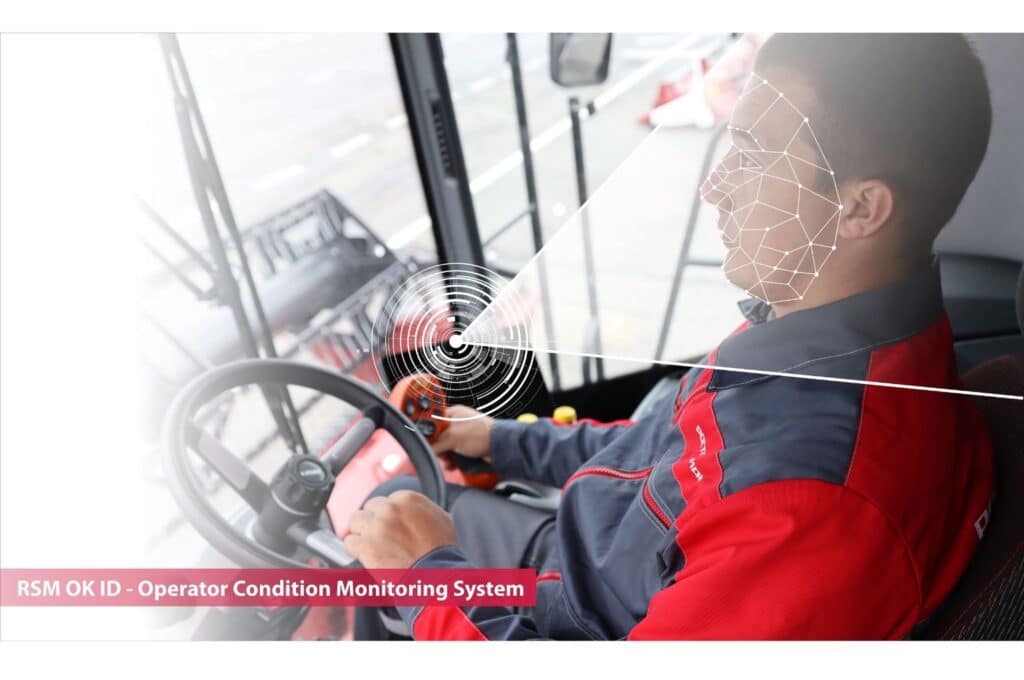
Monotonous work on the field is tiring; at the same time, long working days are part and parcel of the job, especially during harvesting season. The ramifications of a driver falling asleep at the wheel of a tractor or combine harvester can be particularly serious. Even if it is only for a few seconds, the consequences of nodding off are diverse and severe in the agricultural industry, and range from damaged and disabled machines to human fatalities.
Drowsiness warning systems or attention assist systems have already been around for some time in the passenger car sector. Rostselmash has picked up on this approach, transposed it to the agricultural sector and extensively evolved the systems for agricultural use. RSM Ok ID constantly undertakes intelligent monitoring of the driver’s state and, if it recognises signs of drowsiness or other changes of state, immediately notifies the driver with a loud audible signal and stops the machine in order to avoid tragic consequences. In addition, the system automatically generates a message to the Agrotronic farm management system. The operator’s pupils, blinking, head position and pulse are continuously monitored by means of a camera for the drowsiness recognition function. The system therefore recognises the typical indications of drowsiness: frequent blinking, eyes looking downwards or their closure for more than three seconds, a drop in heart rate as well as yawning and rubbing the eyes. Since the RSM Ok ID system is coupled to the machine’s ISOBUS, it is able to actively stop the vehicle. This enables possible accidents to be prevented.
The RSM Ok ID attention assist system is an additional contribution to safety during long working hours.
Compaction Prevention System (CPS)
Company: Agtech 2030, Sweden
The soil compaction and its long-term consequences that are related to increases in efficiency and therefore higher machine weights are well known. The technical options in connection with the design of the machine (contact surface, tyre pressure regulation, caterpillar drive, etc.) are increasingly being exploited. While this development is to be welcomed, it is not sufficient to ensure efficient soil protection. A great deal of damage occurs due to the incorrect use of machines or by driving on arable land at the wrong point in time.
The Compaction Prevention System (CPS) from Agtech 2030 offers the user (farmer, contractor, scheduler) a service that shows the current compaction risk for a field and therefore its navigability in advance and in the form of a map. The speedy, location-specific calculation helps to plan work and also enables the driver of the machine to bypass partial areas that are at risk if necessary. In particular, the ‘field status’ is additionally included in the simulation, and covers important soil status variables such as the tillage method, the arable crop and the vegetation status, for instance.
The system offers users decision-making aids regarding the risk of soil compaction and helps to decide where and when work should be carried out on the fields in the specific vehicle configuration. The farmer is able to plan his work optimally and safeguard the soil as well as possible. Additional tillage measures for eliminating harmful compaction as well as the resulting CO2 emissions can be prevented. This leads to time and cost savings and ensures a high yield potential.
SIS REMOTE
Company: Reichhardt Steuerungstechnik, Joint development with HBC-radiomatic / Vogt / MDB
One of the biggest challenges involved in operating agricultural machinery autonomously is operating and vehicle safety. This is why autonomous machines are only permitted to be operated with extensive constraints, complex sensor systems and costly technology.
SIS REMOTE is an integrated control system for remotely controlling autonomous agricultural machinery. Consisting of a radio control system and ISOBUS automation, the scalable system meets all of the requirements of functional safety and was initially developed to series production maturity in a crawler tool carrier for landscape management. The integration of a wireless smart farming operator terminal into a secure (redundant) radio control system and combination with an automatic steering system based on GNSS navigation with an RTK correction signal as well as complete ISOBUS automation for automated processes and section control enable the implementation of partially autonomous machines even in safety-relevant areas while using ISOBUS automation and automatic track guidance at the same time. This ensures the safety of the operator and his surroundings, automates work processes and makes them more precise, relieves the operator and safeguards the environment. The system is a joint development from Reichardt Steuerungstechnik, HBC-radiomatic, Vogt and MDB. It can monitor and control multiple machines at the same time.
This innovative development makes an important contribution to the (partial) autonomisation of machines and tool carriers, and therefore increases operating comfort and safety.

![RightSpot Ad Template Digital-1400×190-px[76] Ag Leader RightSpot](https://world-agritech.com/wp-content/uploads/elementor/thumbs/RightSpot-Ad-Template-Digital-1400x190-px76-r316mmc0hgoob9qxmklllnnbxta1nlj7t2vjkoyeek.png)


